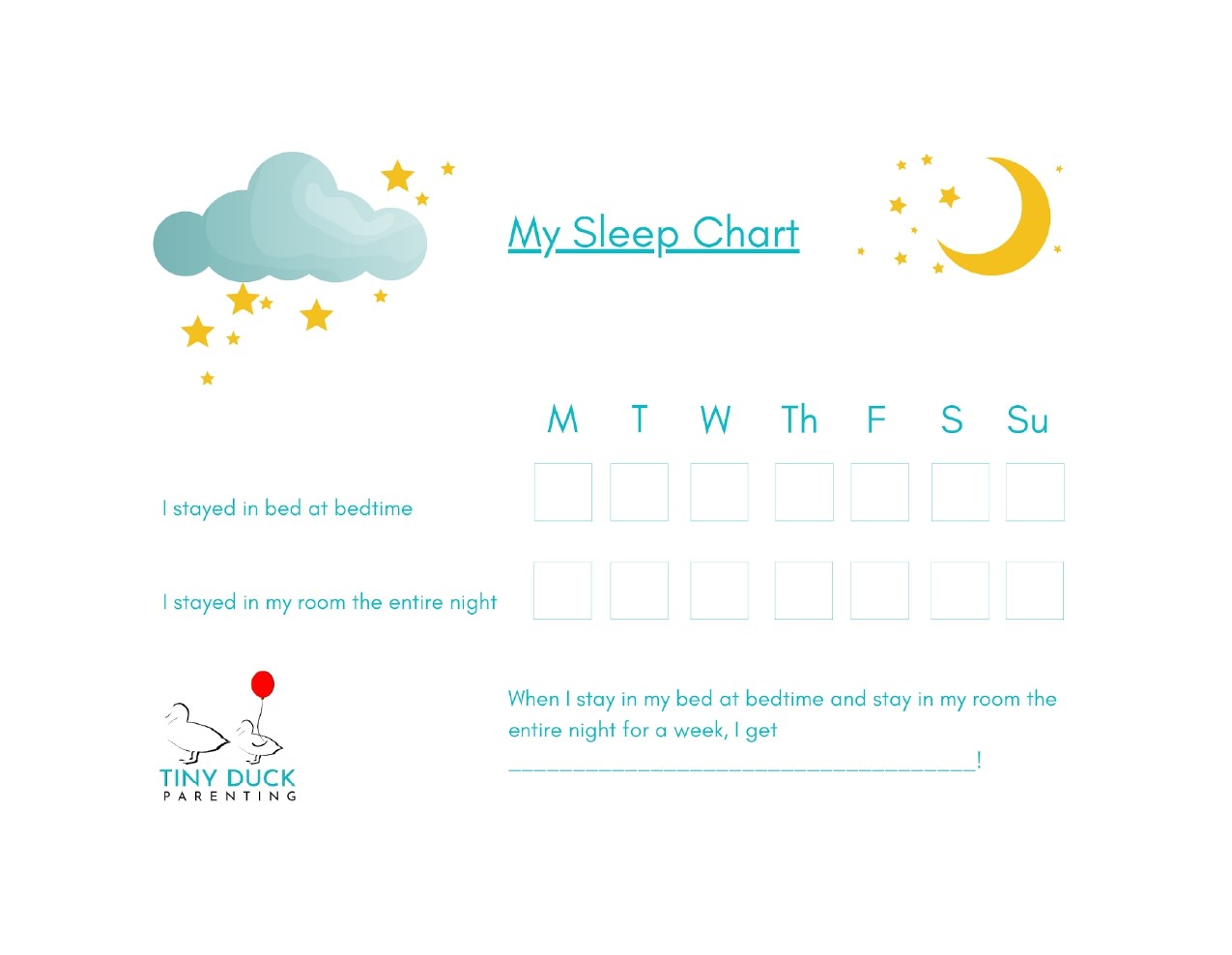Toddler sleep problems are a common concern for many parents, as the nightly challenge of getting young children to bed and ensuring they stay asleep can often feel like an uphill battle. Many families struggle with bedtime routines, sleep schedules, and the constant challenge of getting their toddlers to sleep through the night in their own beds. This blog post will explore the concept of a “toddler sticker chart for sleep” and how it can be a valuable tool in managing your toddler’s sleep habits.
The Importance of Sleep for Toddlers
Before diving into the specifics of a sticker chart, let’s highlight the significance of a good night’s sleep for toddlers. Sleep is essential for a child’s physical and mental development. It plays a crucial role in their overall well-being, affecting their mood, behavior, and cognitive functions. Adequate sleep supports the consolidation of memories, learning, and emotional regulation, all of which are fundamental aspects of a toddler’s growth. Establishing healthy sleep habits early on can contribute to a smoother transition into childhood and adolescence, setting the foundation for a lifetime of balanced sleep patterns.
Ideally, Toddlers should sleep 10-12 hours per night without waking up. Then, they typically require a nap each day as well! This recommended sleep duration ensures toddlers have the energy and focus needed for their daily activities, from playtime to learning new skills. A well-rested toddler is more likely to be in a positive mood, engage in cooperative behavior, and adapt better to changes in routine. As parents navigate the challenges of toddlerhood, prioritizing and facilitating a consistent and sufficient sleep schedule is a crucial aspect of fostering a child’s overall health and development.
The Challenge of Getting Toddlers to Sleep in Their Own Beds
One common struggle for parents is getting their toddlers to sleep in their own beds and stay put all night long. This challenge often leads to disrupted sleep for both the child and the parents, affecting the family’s overall quality of life. Sleep disturbances can result in increased fatigue, heightened stress levels, and potential behavioral issues for toddlers and parents alike. Parents often turn to various strategies to address this issue, including bedtime routines, sleep schedules, and sleep training.
Implementing a consistent bedtime routine, complete with calming activities and a predictable sequence of events, can create a soothing atmosphere that encourages the toddler to settle down for the night. Establishing a structured sleep schedule reinforces the importance of consistent sleep times, helping regulate the toddler’s internal sleep clock. Additionally, sleep training methods tailored to the child’s needs and developmental stage can empower parents to guide their toddlers toward independent and restful nights. By navigating these challenges with patience and perseverance, parents can contribute to a more harmonious sleep environment, promoting better rest for the entire family.
The Bedtime Routine
Establishing a clear bedtime routine is a foundational step in promoting healthy sleep habits for toddlers. A consistent routine helps signal your child that it’s time to wind down and prepare for sleep. This could include activities such as reading a bedtime story, taking a warm bath, or engaging in calming activities. Consistency is key, as it creates a sense of predictability for your toddler. Here is our Toddler Bedtime Routine Chart to guide your child’s bedtime.
Utilizing Proper Wake Windows
Understanding and utilizing proper wake windows is another crucial aspect of toddler sleep. Wake windows refer to the time between your toddler’s nap wake up and bedtime. Typically, experts recommend ensuring that your child has a gap of around 5 hours to become sufficiently tired for bedtime. Adjusting nap schedules and bedtime accordingly can contribute to a smoother sleep routine.
The Toddler’s Predicament: Door Open or Closed?
One dilemma parents often face is whether to leave the bedroom door open or closed when putting their toddler to sleep. Some parents prefer to keep the door open, allowing their children to feel a sense of connection and security. Others find that closing the door provides a quieter sleep environment. The choice depends on your child’s comfort level and your family’s preferences. We have found that most toddlers do best with their doors slightly open, and a white noise machine in the hallway to limit the noise in their room.
The Sticker Chart as a Motivational Tool
Now, let’s explore the concept of a toddler sticker chart for sleep. While it may not be the sole solution to bedtime challenges, a sticker chart can serve as a helpful tool in encouraging positive sleep habits. The idea is to create a visual representation of your child’s progress in staying in bed all night long. Each successful night can be rewarded with a sticker on the chart.

Implementing the Sticker Chart
- Setting Clear Goals: Begin by establishing clear goals with your toddler. Discuss the importance of staying in bed all night and how the sticker chart will track their success.
- Selecting Stickers: Allow your toddler to choose their own stickers for the chart. This adds an element of excitement and ownership to the process.
- Consistent Rewards: Determine a reward system for achieving specific milestones on the chart. It could be a parade around the house, extra playtime, or a special activity.
- Morning Conversations: Use the chart as a conversation starter in the morning. Discuss the success of the previous night and provide positive reinforcement.
Other Strategies for Successful Bedtime
While a sticker chart can be a useful tool, it’s essential to recognize that it’s just one component of a comprehensive approach to toddler sleep. Here are additional strategies to complement the use of a sticker chart:
Consistent Plan for Night Wakings
If your toddler comes out of bed during the night, follow a consistent plan to take them back to bed. This may involve a brief reassurance and a reminder of the sticker chart goals.
Stay Put and Leave the Room Gradually
Gradually extend the time you stay in your toddler’s room before leaving. This helps them feel secure and gradually reduces their reliance on your presence to fall asleep.
Sleep Training
Implementing sleep training techniques, such as the Ferber method or gradual extinction, can be effective in teaching your toddler to fall asleep independently. We are a little biased, but we think our Week to Sleep method is the top for toddlers!
Addressing the Only Need
Sleep: Remember that the primary need your toddler has during bedtime and the middle of the night is sleep. Reinforce the importance of sleep and create an environment that supports their restful night.
In conclusion, a toddler sticker chart for sleep can be a valuable tool in guiding your child toward positive bedtime habits. However, it’s crucial to approach sleep challenges comprehensively. Establishing a clear bedtime routine, understanding proper wake windows, and utilizing consistent strategies for night wakings are equally important components of fostering healthy sleep habits for your toddler.
A structured bedtime routine not only provides a calming transition to sleep but also establishes a sense of predictability that helps toddlers feel secure. Proper wake windows involve recognizing the optimal time for naps and bedtime, ensuring that your child is neither overtired nor undertired. Consistency in responding to night wakings, whether through gentle reassurance or gradual sleep training, contributes to building resilience and self-soothing skills.
By combining these approaches, you can create a supportive sleep environment that contributes to the overall well-being of your child and the entire family. Remember that each child is unique, and what works for one may not work for another. Be patient, flexible, and observant, adjusting your strategies as needed. Ultimately, the goal is to establish positive sleep associations and routines that promote a restful night’s sleep for your toddler, setting the stage for a lifetime of healthy sleep habits.





